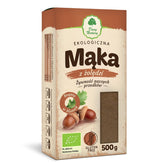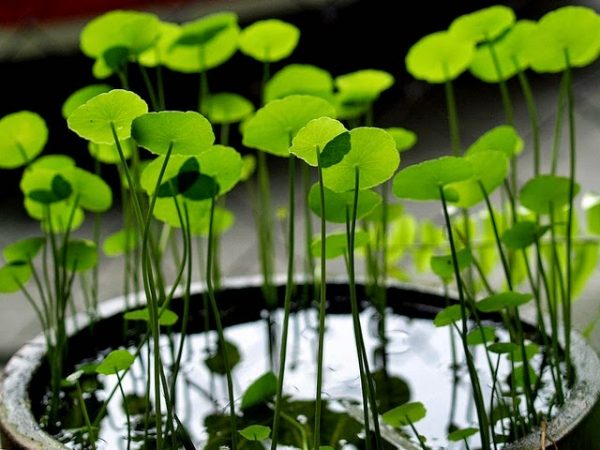Pennywort, also known as gotu kola. What is hidden in a small inconspicuous plant?
- Ready effects on the nervous system
- Problems with the blood system
- Hard-to-heal wounds and stomach ulcers
- Cosmetic use of Gotu Kola
- When should Gotu Kola not be used?
- Summary
- BIBLIOGRAPHY
Indian navel herb / Gotu Gotu kola (Centella asiatica (L.)) is a small, creeping plant with round leaves and thin petioles belonging to the celeriac family. Its natural habitat is tropical and subtropical regions, which is why in Poland it is mainly found in the form of dried fruits or enclosed in capsules or tablets. It is especially valued in Ayurvedic medicine (ayur - life and veda - knowledge), which originated in Southeast Asia and has been used primarily in India for over 3,000 years. According to this system, there is no division into body and soul in medicine, therefore it approaches patients holistically. Both the leaves, roots, and the whole herb of Gotu kola can be used for therapeutic purposes. The main active ingredients in Centella asiatica are pentacyclic triterpene saponins, among which asiatic acid and madecassic acid, as well as asiaticoside and madecassoside, are particularly prominent in this plant. For the raw material obtained from this plant to have medicinal properties according to the pharmacopoeia, it should contain no less than 6% of the total triterpenoid derivatives, calculated as asiaticoside. Although some sources cite "Brahmi" as another name for this plant, this term nowadays refers to a different plant species and should not be used interchangeably [1] [2] [3].
Ready effects on the nervous system
Centella asiatica is one of the most powerful herbal supplements that acts on the central nervous system (CNS). It calms and improves concentration; its use is also helpful in depression and depressive states. This plant is an adaptogen, a group of non-toxic plants that allow you to better endure everyday stressful situations. It also has neuroprotective effects, meaning it prevents the reduction of the number of nerve connections, which allows it to act as a preventative measure against neurodegenerative diseases and help patients with memory loss. It prevents the formation of amyloid plaques in Alzheimer's disease, dopamine neurotoxicity in Parkinson's disease, and reduces oxidative stress [4] [5] [6] [7].
Problems with the blood system
According to studies, Gotu Kola, when taken in the form of an infusion, can reduce blood pressure in people with hypertension by up to 10% by improving capillary filtration. This plant also has a powerful effect on connective tissue, strengthening blood vessels and the protective function of the epidermis [8] [9] [10].
Hard-to-heal wounds and stomach ulcers
Gotu kola stimulates the synthesis of fibroblasts (cells involved in wound healing and scab formation) and collagen types I and III, thereby influencing wound healing. Asiaticoside, one of the active ingredients of this plant, also helps in this process and also has anti-inflammatory and anti-inflammatory effects. Centella asiatica extract has antifungal and antibacterial properties against Staphylococcus aureus, Escherichia coli, Bacillus subtilis, and Propionibacterium vulgaris, and the fungi Aspergillus niger, Aspergillus flavus, and Candida albicans [1] [8] [11] [12].
Cosmetic use of Gotu Kola
Gotu kola, thanks to the triterpenes madecassoside and asiaticoside it contains, prevents the proliferation of keratinocytes, i.e., the excessive proliferation of skin cells, thereby exerting an anti-psoriasis effect. It also stimulates the synthesis of fibronectin and collagen types I and III, which is why it is most often used in anti-aging preparations, to restore skin elasticity, and to combat the formation of scars and stretch marks. Extracts from this plant are also often added to anti-cellulite preparations because Asian pennywort has lipolytic properties—enzymatic fat breakdown. At the same time, gotu kola has powerful antioxidant properties, thanks to which it can protect cells from oxidative damage caused by free radicals and UV radiation, thus reducing photoaging of the skin and preventing many diseases of civilization [2] [3] [12].
When should Gotu Kola not be used?
As with most preparations, it should not be used in pregnant or breastfeeding women, as there is insufficient research to confirm the absence of contraindications to its use in this case. It should also be used with caution by people suffering from various types of liver disease or low blood pressure. Apart from these groups, Gotu Kola is relatively well tolerated and does not cause any side effects, except for mild headaches and dizziness, as well as mild digestive disturbances.
Summary:
Gotu Kola is a plant that influences concentration and improves memory. It also has powerful properties that, among other things, accelerate wound healing and strengthen connective tissue by stimulating collagen synthesis. For these reasons, it is also used relatively frequently in cosmetics.
BIBLIOGRAPHY:
- Katarzyna Karłowicz-Bodalska, Stanisław Han, Tomasz Han, Marta Miranowicz, Agnieszka Bodalska: Centella asiatica (L.) Urban, syn. Hydrokotyle asiatica L. – Asian pennywort – a well-known medicinal plant of the Far East; Advances in Phytotherapy 2013, 4
- Włodzimierz Markiewicz: Neem and Asian pennywort – little-known plants found in veterinary preparations; Veterinary Life 2020, 95(5)
- Bożena Kowalczyk: Asian pennywort in medicine and cosmetics; Panacea – Herbal Medicines, December 2010; 4(33):14-15
- Belwal et al.: Gotu Kola (Centella asiatica); Plant and algal extracts. Elsevier Inc. All rights reserved. Chapter 3, 2019
- Shinomol GK, Muralidhara, Bharath MM: Exploring the role of “Brahmi” (Bacopa monnieri and Centella asiatica) in brain function and therapy. Recent. Patt. Endocrine. Metab. Immune. Drug. Discov. 2011, 5: 33–49.
- Orhan IE: Centella asiatica (L.) Urban: From traditional medicine to modern medicine with neuroprotective potential. Evidence. Based. Supplement._ _ Alternative Med. 2012, 1–8
- https://examine.com/supplements/centella-asiatica/research/#citations accessed on June 27, 2021
- Dominika Król: Asian pennywort (Centella asiatica L.) - medicinal properties; Advances in Phytotherapy 2010, 2: 101-105
- Fifit Eka Furi Astutika, DiahFauzia Zuhroha, Moh. Rizqi Lazuardi Ramadhan: The effect of Gotu Kola (Centella asiatica L.) tea on blood hypertension; _ _ Enfermerie Clinica 2021, 31(2):S195-S198
- Anna Amroziak-Krezymo, Agata Czałbowska: Active ingredients used in cosmetics for the care of couperose skin; Aesthetic Cosmetology 2018, 6(7):639-644
- Minija J, Thoppil JE. Antimicrobial activity of Centella asiatica (L.) Urb. essential oil. 2003; 47:179-81.
- Ratz-Lyko A, Arct J.: Cosmetic and dermatological properties of Centella asiatica ; Pol J Cosmetol 2015, 18(1): 25-30
THE PUBLISHER'S CHOICE
Dried plums 1 kg BIOGO
- €7,01
- €7,01
- Unit price
- / per
Dried White Mulberries 500 g ORGANIC
- €5,84
- €5,84
- Unit price
- / per
Almonds 1 kg BIOGO
- €11,69
- €11,69
- Unit price
- / per
Cranberries sweetened with apple juice organic 1 kg BIOGO
- €16,37
- €16,37
- Unit price
- / per
Dried dates 1 kg BIOGO
- €4,21
- €4,21
- Unit price
- / per
Unpeeled buckwheat groats 1 kg BIOGO
- €2,81
- €2,81
- Unit price
- / per
Walnuts 800 g BIOGO
- €8,65
- €8,65
- Unit price
- / per
Peeled sunflower seeds 1 kg BIOGO
- €3,04
- €3,04
- Unit price
- / per
PULLED ORGANIC SUNFLOWER SEEDS 1 KG BIOGO
- €4,44
- €4,44
- Unit price
- / per












































































































































